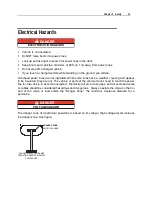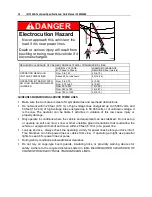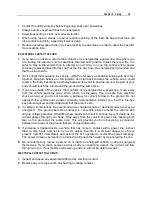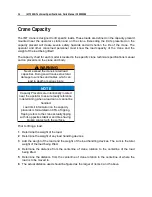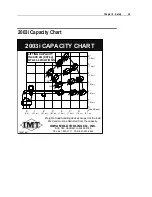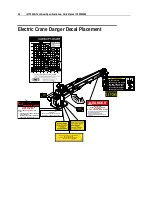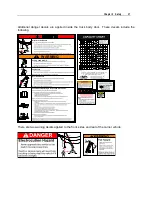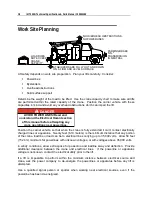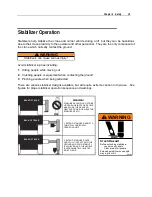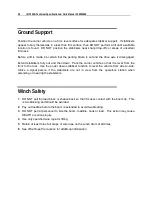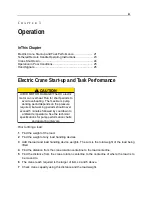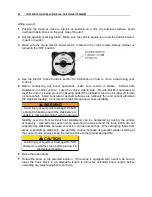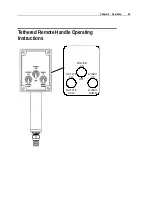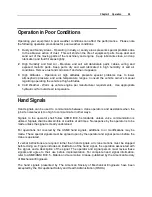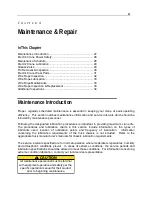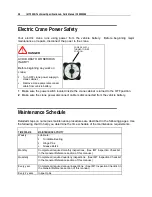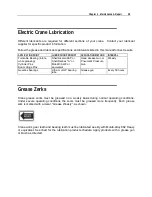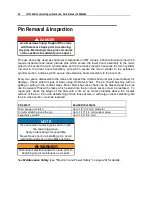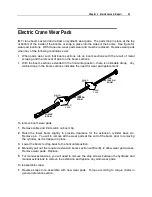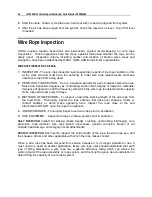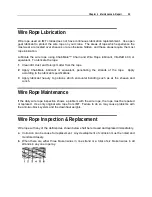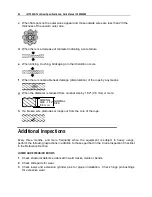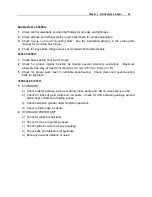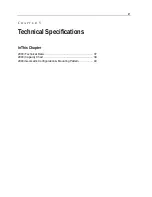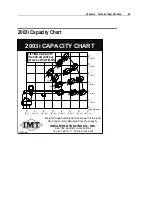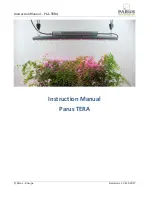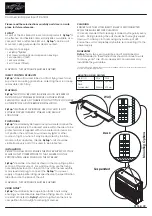
Chapter 3 Operation
25
Operation in Poor Conditions
Operating your equipment in poor weather conditions can affect the performance. Please note
the following operation procedures for poor weather conditions.
1
Dusty and Sandy Areas - Operating in dusty or sandy areas presents special problems due
to the abrasive action of dust. This will shorten the life of equipment parts. Keep dust and
sand out of the moving parts of the machinery and engine. Keep lubricants clean, and cap
lubrication and fluid fill areas tightly.
2
High Humidity and Salt Air - Moisture and salt will deteriorate paint, cables, wiring and
exposed metallic parts. Keep parts dry and well lubricated in high humidity or salt air
conditions. Remove rust and corrosion if and when it appears.
3
High Altitudes - Operation at high altitudes presents special problems due to lower
atmospheric pressure and wide temperature ranges. Consult the vehicle owner’s manual
regarding operating the vehicle at high altitudes.
4
Cold Weather - Warm up vehicle engine per manufacturer requirements. Use appropriate
hydraulic oil for outside air temperature.
Hand Signals
Hand signals can be used to communicate between crane operators and assistants when the
job site noise level is too high to communicate in other ways.
Signals to the operator shall follow ASME B30.5 standards, unless voice communication is
utilized. Signals shall be discernible or audible at all times. No response by the operator is to be
made unless the signal is clearly understood.
For operations not covered by the ASME hand signals, additions to or modifications may be
made. These special signals must be agreed upon by the operator and signal person before the
crane is operated.
If verbal instructions are required rather than hand signals, all crane motions must be stopped
before doing so. Figure includes an illustration of the hand signal, the operation associated with
the signal, and a description of the signal. The operator and signal person must review these
signals and agree to their use before implementation. For complete hand signal information,
refer to ASME/ANSI B30.5 - Mobile and Locomotive Cranes, published by the American Society
of Mechanical Engineers.
The hand signals presented by The American Society of Mechanical Engineers have been
accepted by the Occupational Safety and Health Administration (OSHA).
Summary of Contents for 2003i
Page 2: ......
Page 6: ......
Page 38: ......
Page 77: ...Chapter 8 General Reference 75 X R CA ITEM EXPLANATION DATE CORRECTED ...

